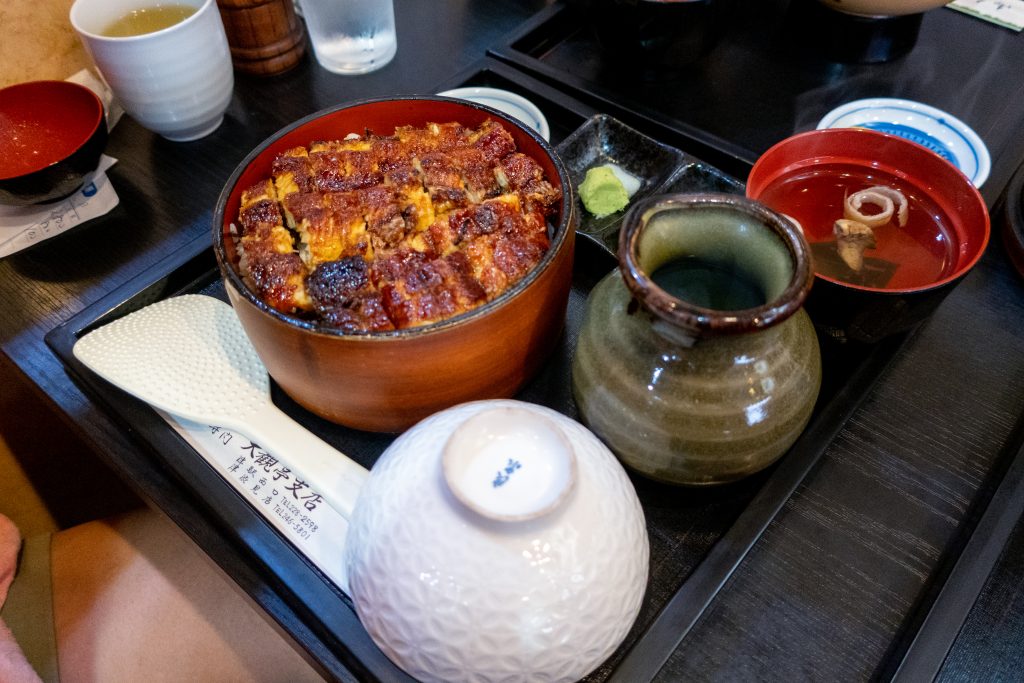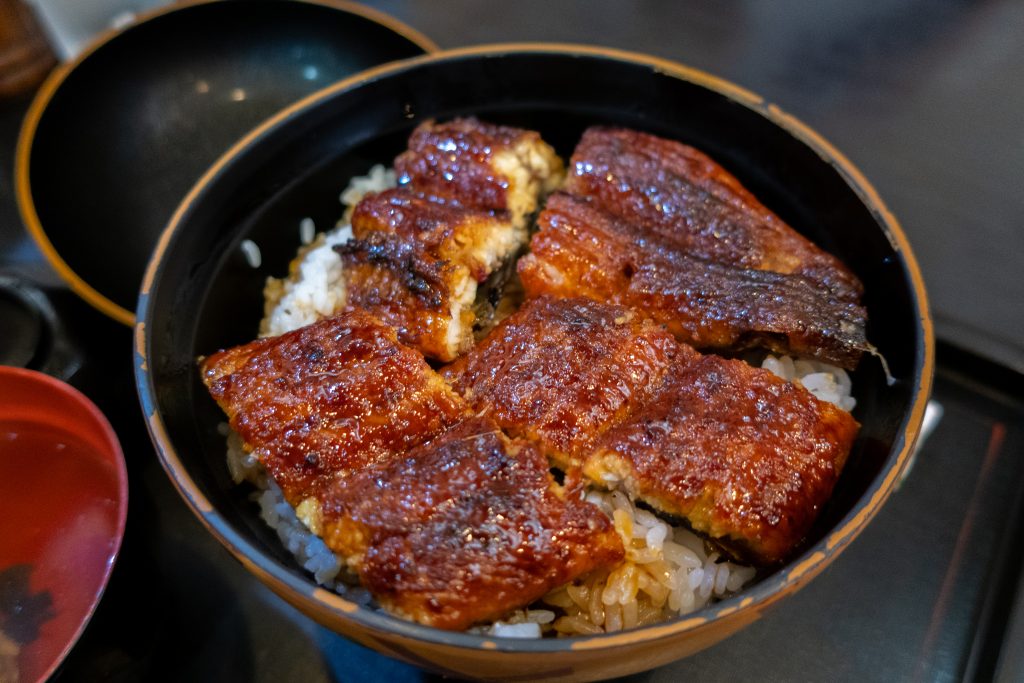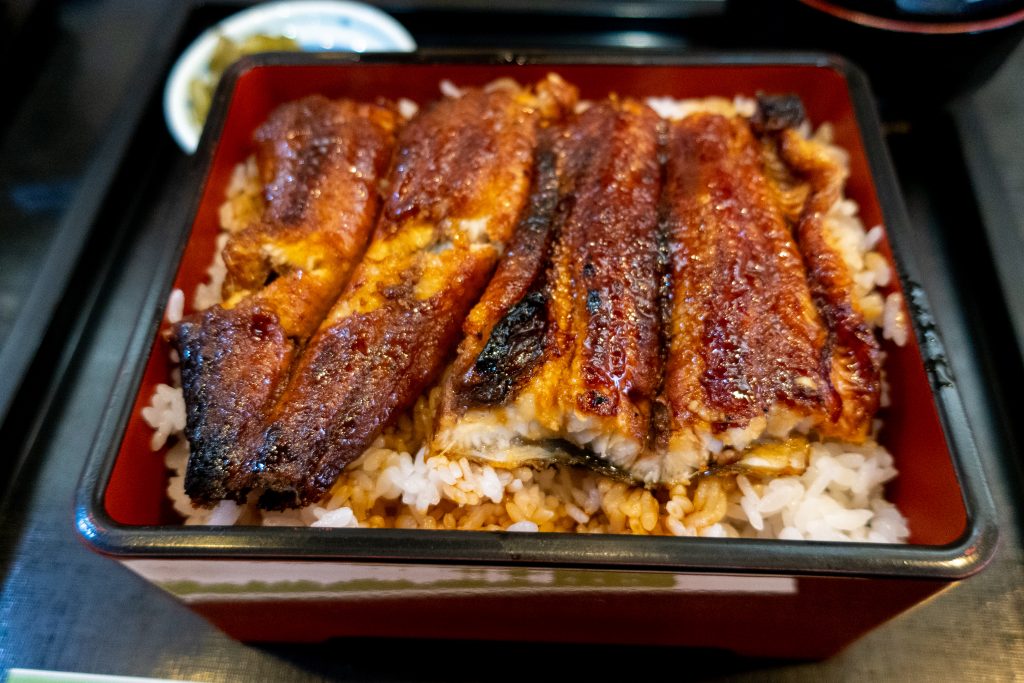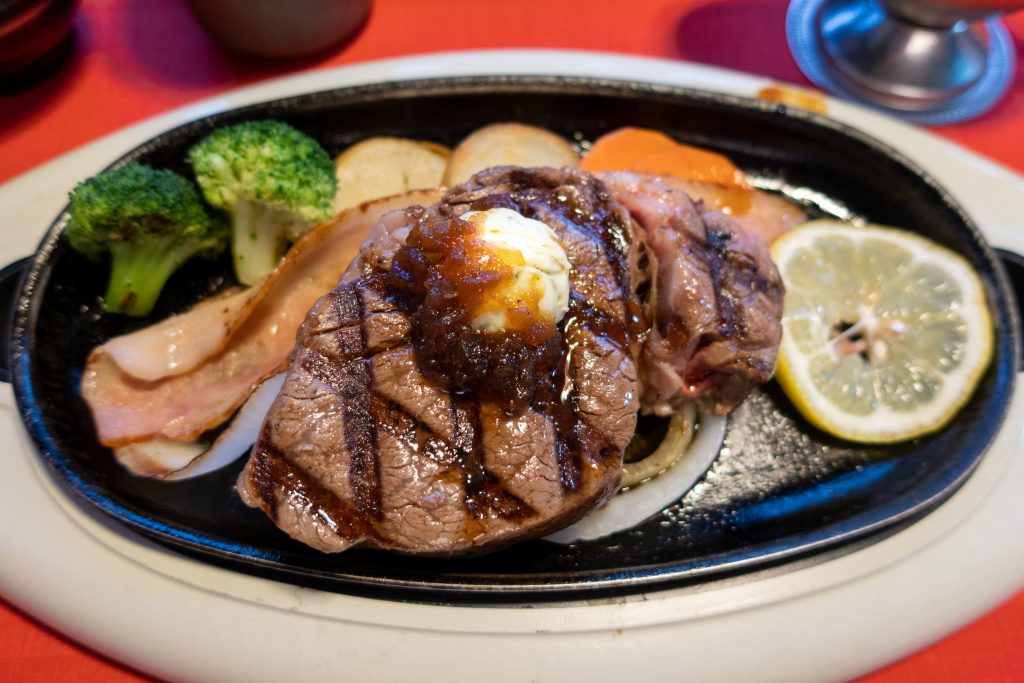


Tsu has been famous for its freshwater eel dishes since before World War II. The region is home to several large water sources, including Shitomo River, Ano River, and Kumozu River, which have long been used for raising eels. Thanks to this booming economy, locals have always had relatively affordable access to this delicacy compared to other parts of Japan. After the war, Tsu lost its status as the eel farming capital of Japan, but local dining habits refused to change and so Tsu still serves a variety of eel dishes to this day. The most common way to serve eel in Tsu is kabayaki-style—the eel is cut in half, gutted, skewered, and grilled in a sweetened soy sauce. The eel can either be served by itself, or placed over a bowl of rice (this is known as “una-don” or “eel-bowl”). The sweetness of the sauce combined with the smoky flavor of the eel makes it a flavorful, highly valued dish within the region.







Famous around the world for its sweet fatty flavor and silky texture, this meat comes from Japanese Black beef cattle raised in the Matsusaka region of Mie. In an effort to prevent fraud, each calf must be registered with the Matsusaka Beef Management System and every cow is issued an Association Member’s Certificate. The meat from roughly 7,400 cattle is shipped both locally and worldwide every year. What’s the secret to its unrivaled flavor? Matsusaka beef contains more fat than other cattle, and the fat itself also has a lower melting temperature. This gives the meat a smooth, silky texture and also adds a certain amount of sweetness to the overall flavor. It’s most commonly consumed in steak form, but it’s also popular as part of a Japanese barbecue set or in a roast beef meal.







